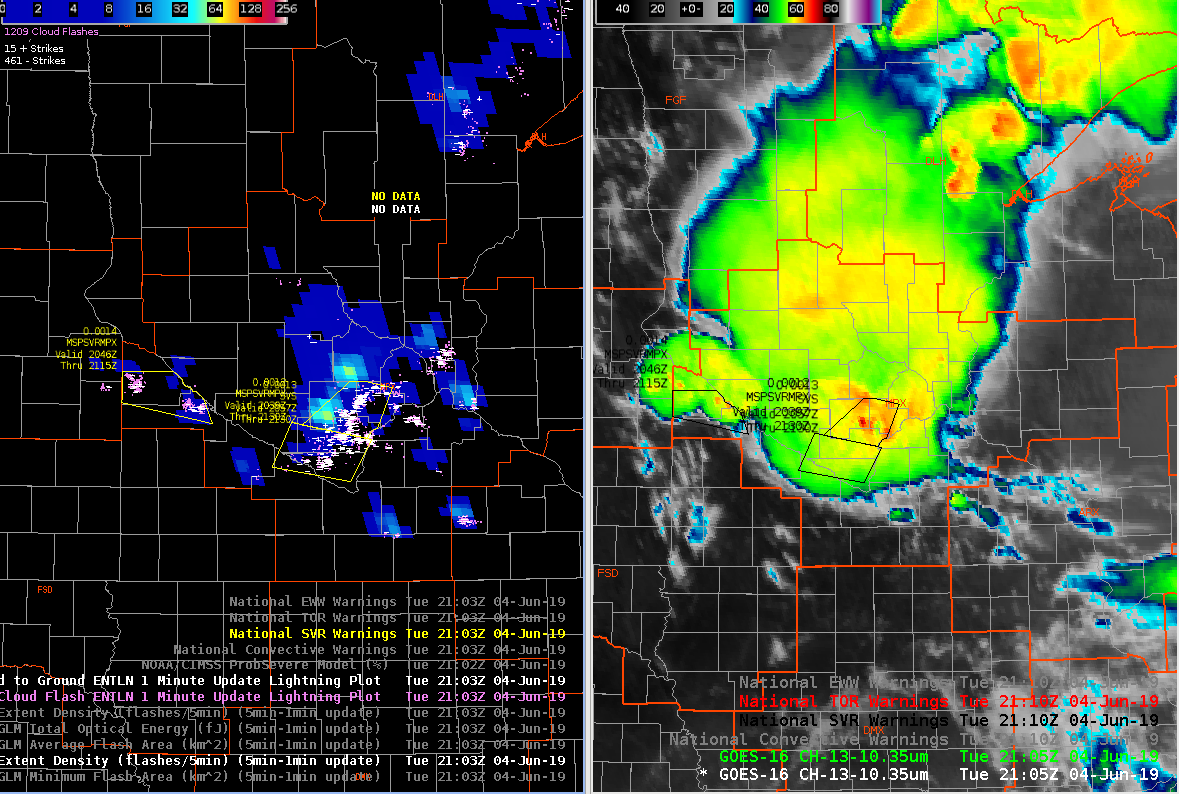
Noticed the FED was matching up well with ENTLN data in our eastern cells, but then the cells to the west should have been electrically active as well. ENTLN data shows several flashes, but FED from GLM is minimal.
Charley

Noticed the FED was matching up well with ENTLN data in our eastern cells, but then the cells to the west should have been electrically active as well. ENTLN data shows several flashes, but FED from GLM is minimal.
Charley

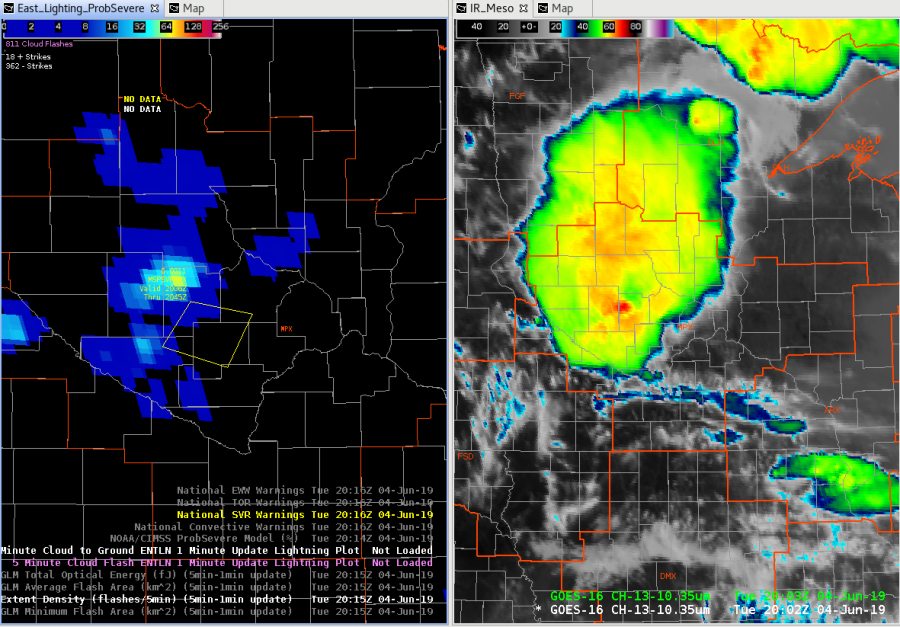
Lightning on FED starting to go up again, right as cell with rotation starts to meet up with east-west oriented boundary to the east of that cell (see bottom right spectrum width product).
AzShear product following that rotation over time well…watching for increase in intensity there.

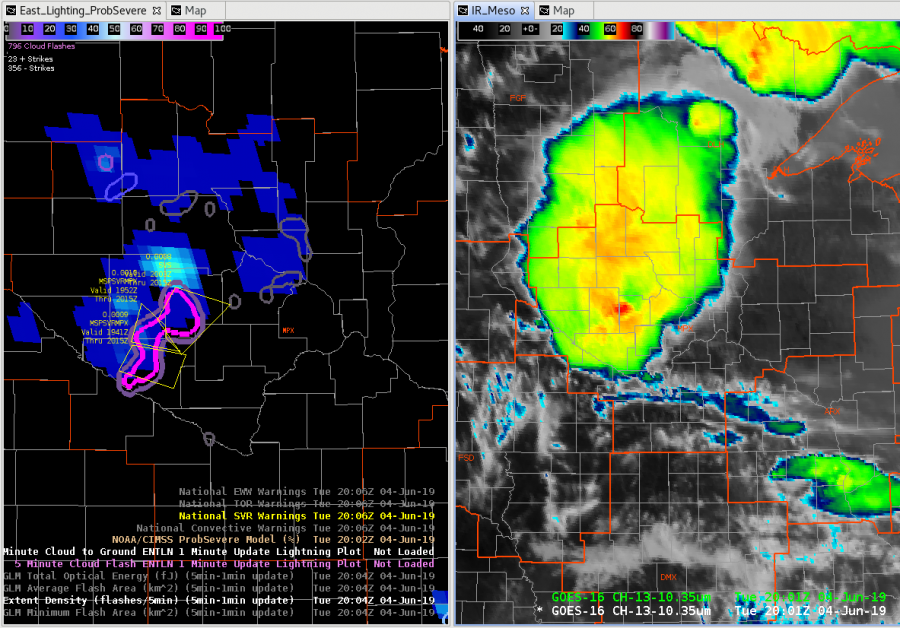
As you’re debating issuing a tornado or severe warning, it is good to see the lightning changes over time as well as cloud tops. Both are trending more severe in the image above.

Flash extent density focused on that storm as well. Prob severe coming up. Had 50 dBZ to 48 kft and ~115 knot Delta V at storm top.
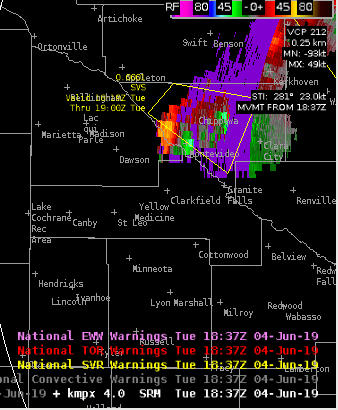
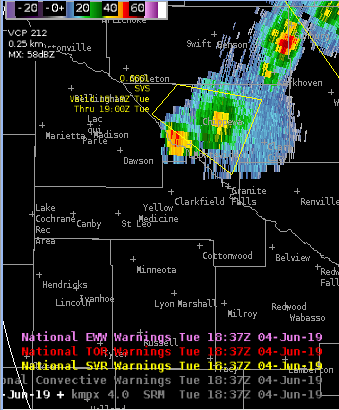
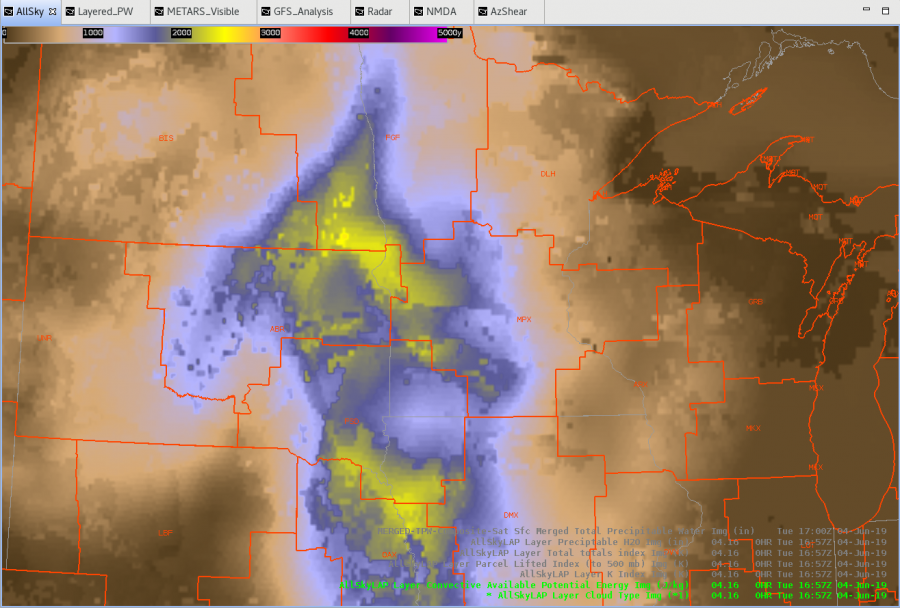
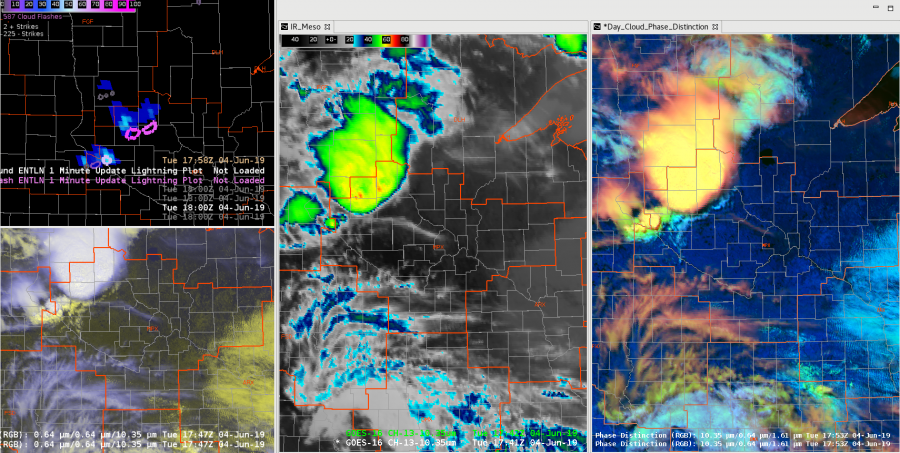
Ongoing complex of thunderstorms pushing into south central MN this hour. Have a new set of thunderstorms forming in what AllSky is showing as a higher CAPE environment along the outflow pushing out from this complex. ProbSevere has picked up on this cell as well (near Milan)…showing a Hail chance of 55% now and growing quickly. Will monitor the downstream growth of both systems.
A storm just northeast of Amarillo developed quickly along a frontal boundary, and quickly showed supercellular characteristics with mid level rotation and a 65+ dbz core reaching about 35 kft MSL. 2 inch hail was reported with this storm during this time. GLM data again shows a decrease in both Flash Extent Density (top right) and Event Density (top left) show a notable decrease in GLM lightning activity while ground based radar remains fairly unchanged, and both the IR satellite presentation (bottom right overlaid on visible imagery) and radar data (not shown) indicate the storm maintained intensity and if anything, had strengthened a bit.
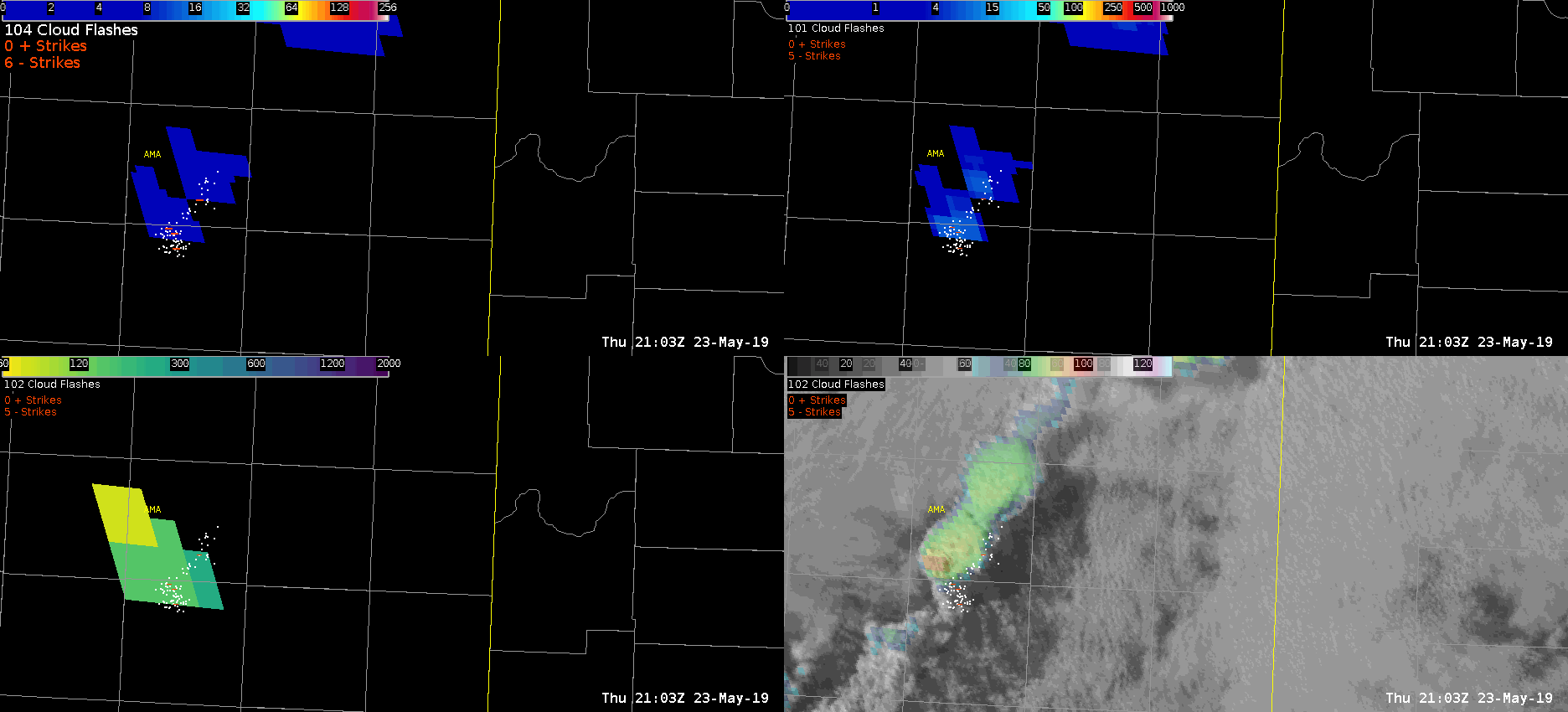
-64BoggsLites
A supercell moving northward along the dryline over the Texas Panhandle region underwent a split over the last 20 minutes or so. Preceding the split, there was a notable decrease in 5 minute GLM Flash Extend Density and Event Density. After the split, there were to notable maxes in both of these products. However, in the GLM Minimum Flash Area, this trend was not observed due to the more coarse resolution of the product. Better resolution may have helped identify both updraft regions within the 2 storms after the split. Additionally, a downward trend was noted in 5 Event Density and Flash Extent Density despite no real change in the ENTLN lightning activity. A loop of GLM data and IR/Vis depicting this storm split is below. 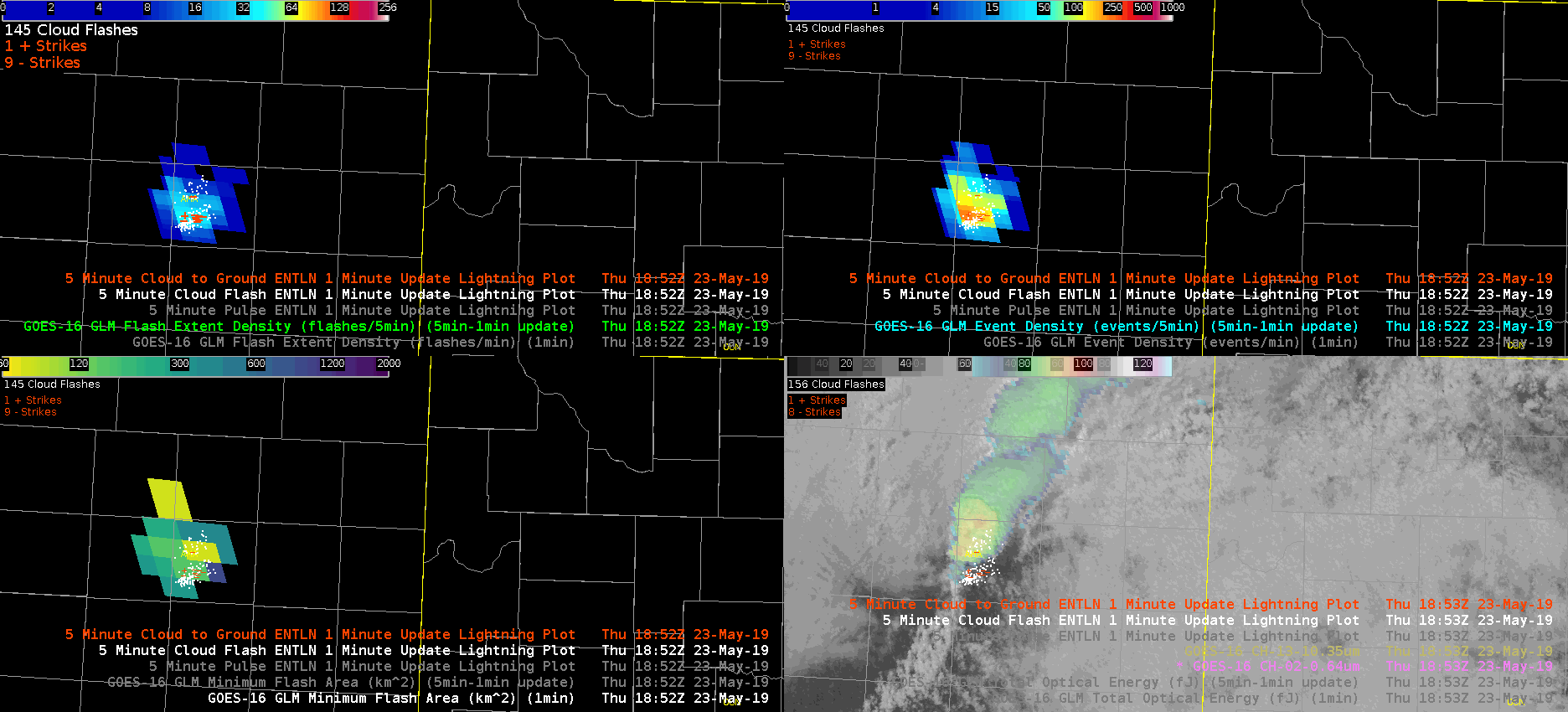
-64BoggsLites
Comparing GLM flash extent density and GLM event density to ground based ENTLN data along the Kansas/Missouri border region, there is a notable minimum in GLM data with a couple of the large clusters of ground based lightning clusters, while the other ground based lightning clusters seem to correlate relatively well with GLM data. Very strange indeed
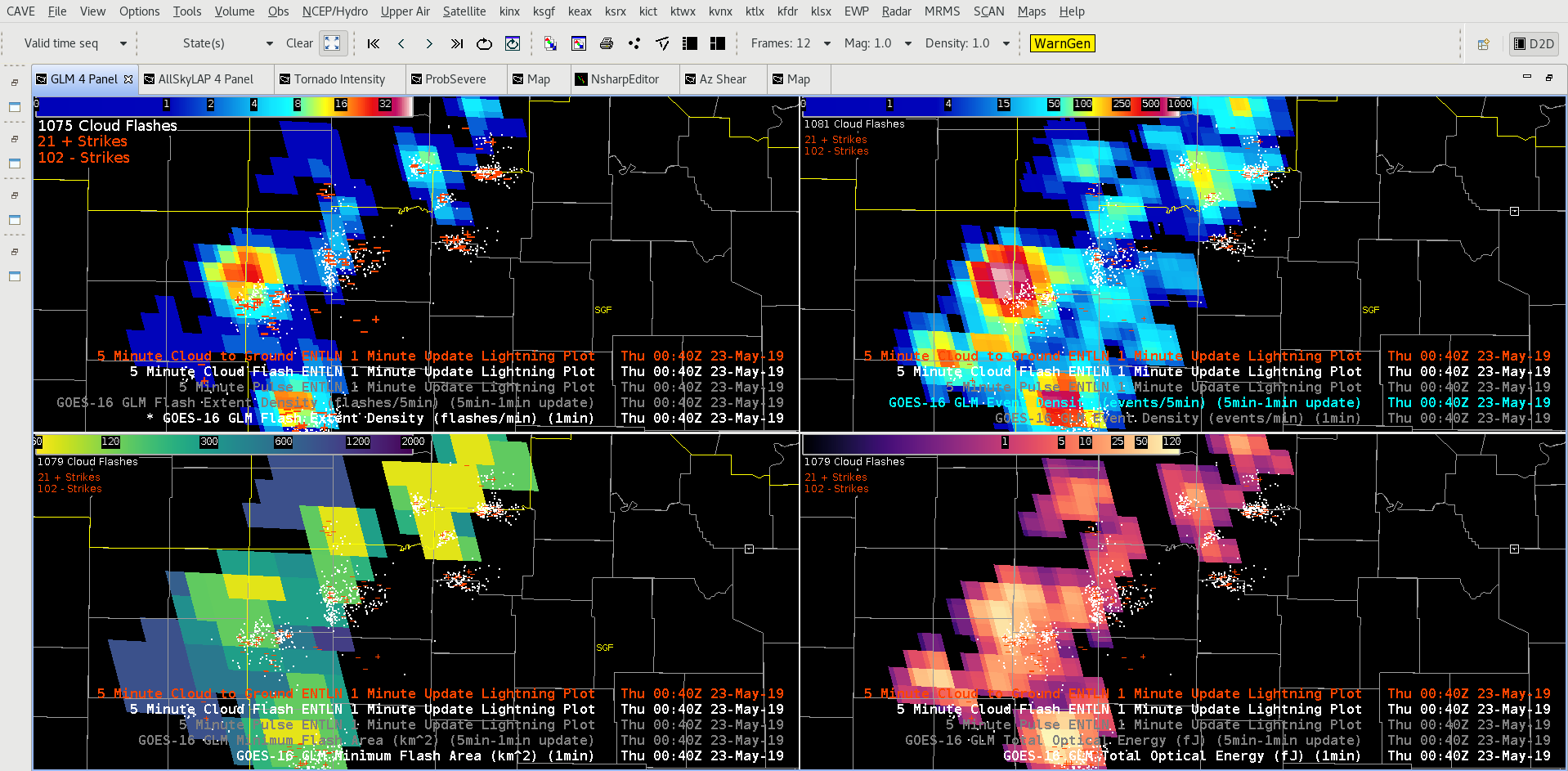
-64BoggsLites
Storms continue just after 7pm near the Oklahoma/Texas border. A currently severe-warned storm saw a substantial and rapid increase in lightning activity observed by the GLM Flash Extent Density product. However, the ground based lightning network did not follow the same trend and remained fairly steady. The ground based data is more reasonable considering the storm did not experience any sort of significant strengthening during this time period. Earlier discussions with lightning detection experts suggested the low GLM FED count may be due to the location of lightning within the storm updraft region, which could impact how well GLM can sense it. That is difficult for the typical operational meteorologist to consider in real-time since it goes well beyond current training, and leads to decreased forecast confidence in the lightning data.
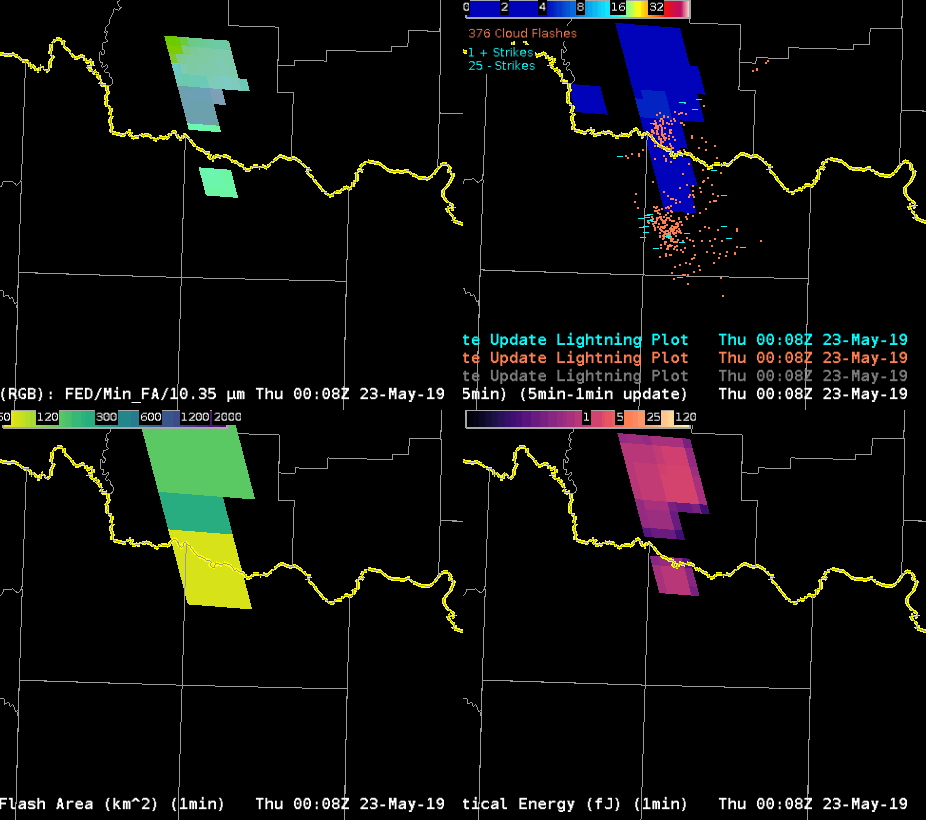
Dave Grohl
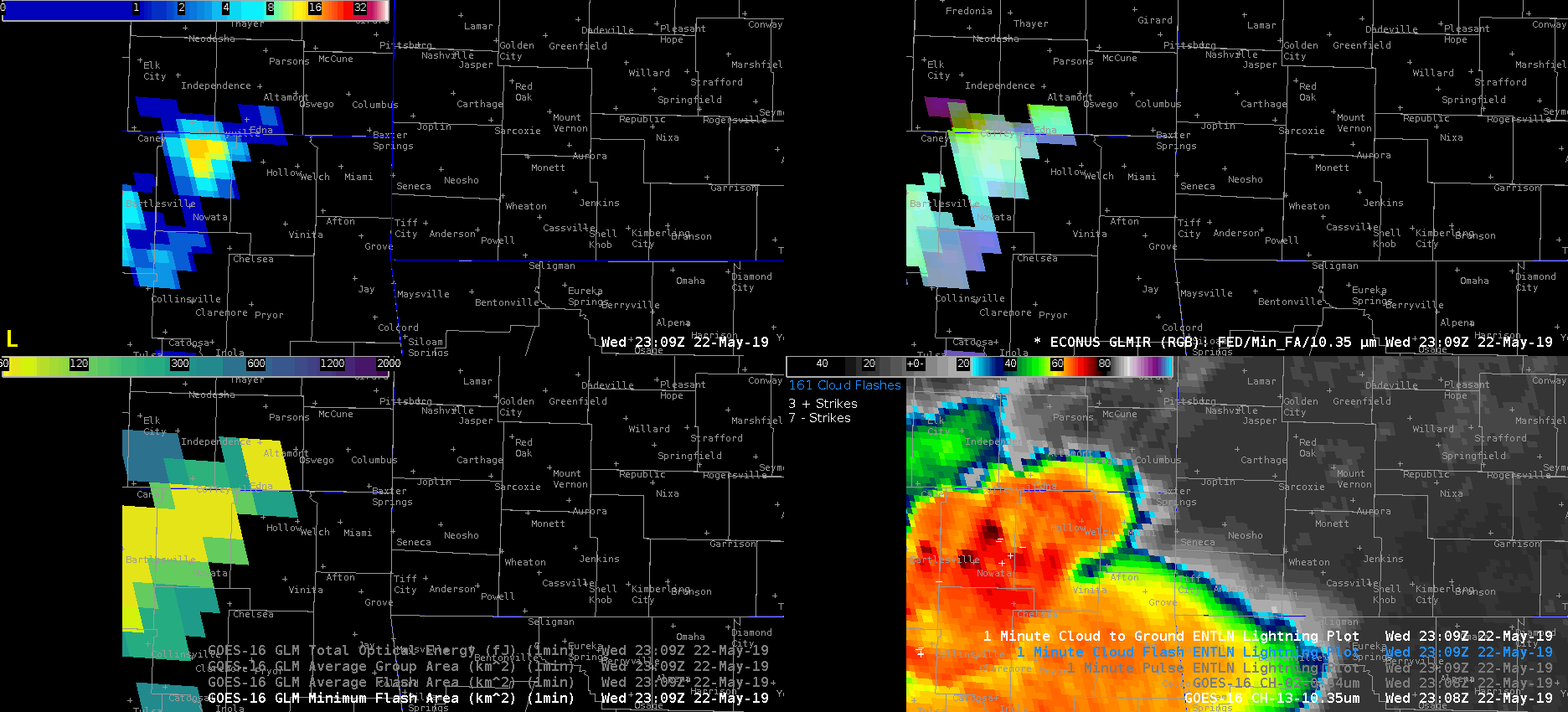
GOES-16 10.3 um IR channel in the lower right panel captured an exceptionally cold overshooting top at -82 C. This occurred toward the beginning of the animation at 2311Z in far northern Oklahoma (south of Coffeyville, KS) and preceded a large jump in the flash extend density (upper left). The minimum flash area did not change much during this loop, so it may be advantageous for this component of GLM to have a higher spatial resolution than what is currently used. The GLM RGB product (upper right) merges the flash extent density, minimum flash area, and 10.3 um cloud top temperatures. A group of bright cyan and white pixels helped highlight where all three of the aforementioned components were maximized. In addition to a substantial increase in the flash extent density 5-10 min following the -82 C cloud top temp., ENTLN ground based lightning flash counts doubled during the same time.
Although the environmental conditions already supported warning on this storm prior to the overshooting top (OT), seeing the FED and ground based lightning double, likely in response to the intense OT, may push a forecaster to upgrade the severity of the warning (larger hail, higher winds etc.) -Roy